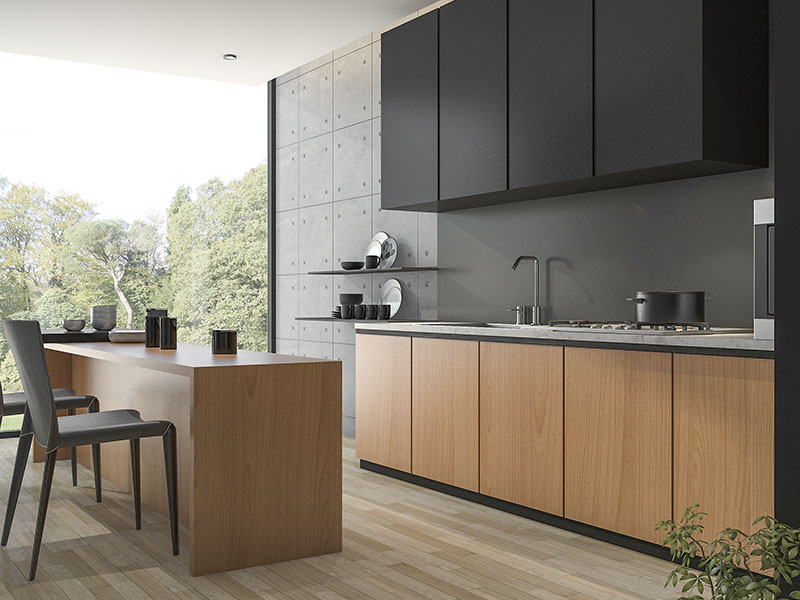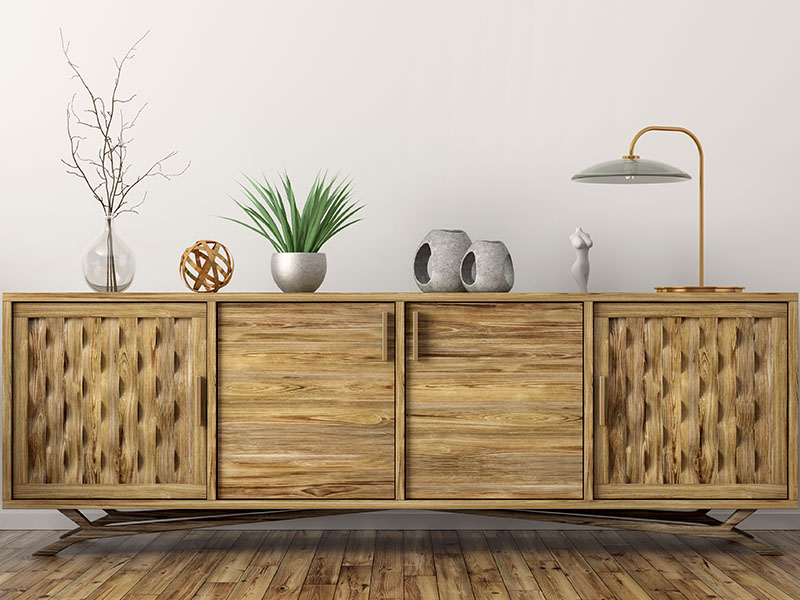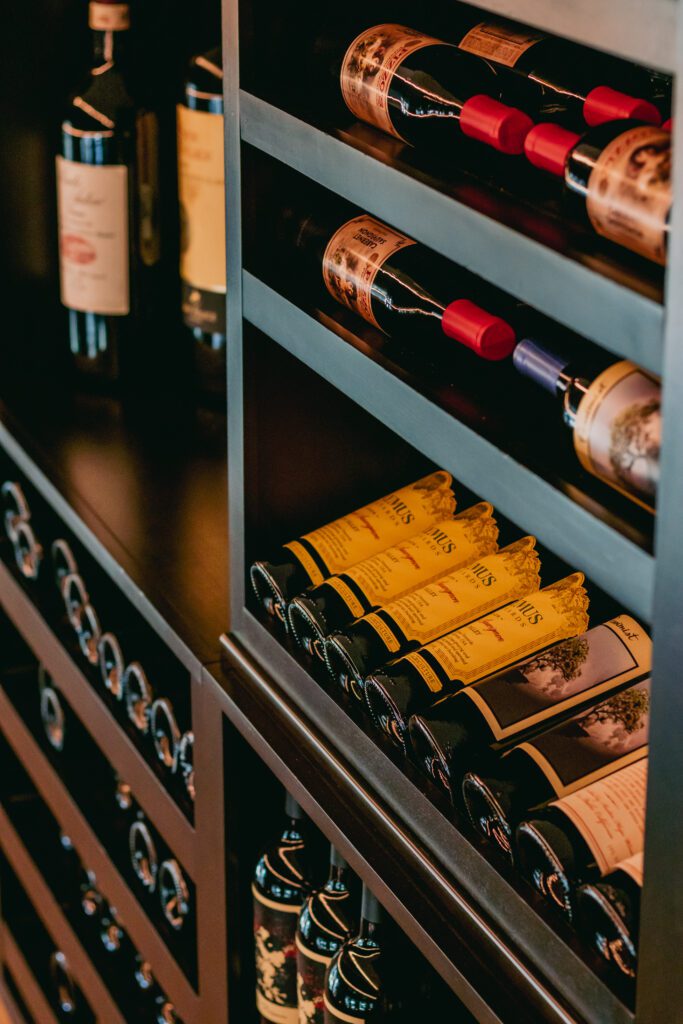Types of wood for your cabinetry & furniture
Wood has many practical applications from furniture to cabinetry, wine cellars and more.
There are dozens of types of wood that are commonly used for commercial and residential custom projects, and they all have unique qualities for specific applications. For example, when it comes to creating detailed furniture, softwood is much easier to sculpt. There are even further qualities to consider regarding the finish aesthetic too, such as the natural grain of the wood, which impacts how well the wood can take a stain. But before we keep going you have to understand there are softwood and hardwood:
Hardwood
Is identified by trees that are deciduous. Trees such as maple, cherry, and oak.
It has these characteristics
- Broad
- Leaved flowering specie
- Deciduous varieties
- Seeds are produced inside a shell (like a fruit or nut)
- Dense grain (generally more expensive)
- Mostly darker in color
- Close grain
- Heavy in weight and density
Softwood
Softwood
Softwood comes from trees such as pine and fir trees.
It has these characteristics:
- Needles instead of leaves
- Seeds are either uncovered or in a cone
- Less expensive
- Usually lighter in color
- High in sap content
- Loose grain
Hardwoods are better suited for areas that are more susceptible to wear and tear, for example, cabinets.
Softwoods often find their place in the home as picture frames, crafts, shelves, moldings, balusters, and even handrails. It is also common that furniture is crafted with softer woods such as pine, poplar, or fir.
Most popular types of wood
Oak
It belongs to the hardwood family and it is relatively abundant and has an attractive, open grain that looks great when used for cabinets.
Both are dense, heavy, and hardwearing, making them ideal for furniture, especially noted for its resistance to stains and scratches.
Ash
Is hardwood, that’s why it is ideal for bending, which makes it good for curved furniture. The colors range from a grayish light brown through to an almost reddish hue. The grain is straight and the wood is known for its strength and is valued for its suitability in the making of tool handles and furniture.
Walnut
The rich, chocolate-colored grain makes it perfect for veneers and it is highly prized in the high-end furniture industry. It’s also part of hardwood.
Teak
It has versatility and durability. The naturally high oil content makes it extremely water-resistant and immune to decay and fungus.
Maple
The dense heaviness of this wood, along with its moisture-resistant qualities, makes this a wood ideal for items such as furniture and cabinetry that endures a high level of use. Existing varieties of maple, but the most commonly used is hard maple, also known as sugar maple or rock maple.
Cherry
Is best known for its red to reddish-brown coloring, which deepens with age.
It’s a great wood for cabinetry and furniture, as its slightly softer rating allows it to be shaped easily while still withstanding moderate use.
Mahogany
The rich, reddish-brown darkens over time to give an alluring sheen in the distinctive grain. It is frequently used in furniture because of its appearance.
Pine
This is part of the softwood. Is strong, lightweight, and flexible. Varying in color from a yellowish-brown to a creamy tone, it is a close-grained variety and the growth rings can be seen clearly.
Redwood
Is ideally suited for outdoor furniture or decking due to its resistance to decay and natural insect-repellent qualities. It is easy to work by hand and it’s also a softwood.

The best wood for cabinets
Cabinets have to handle some wear and tear. Softer woods can be used, especially for detail work like molding, which needs to be softer in order to be tooled.
Maple is fantastic for painted finishes and stained finishes.
Cherry is a great choice for high-character cabinets with a deep reddish-brown tone.
Oak can be finished using techniques that are very modern and trending such as wire brushing, gray-washing, or other techniques.
The best wood for furniture
There are many factors involved with choosing the right wood for furniture. Overall, hardwoods are usually better, as the furniture must be able to stand up to regular use.
If you are planning to put furniture in exteriors, then teak wood and mahogany work well.
For interiors we recommend using oak and cherry to chairs, tables, desks and more.
It’s also worth considering what kind of detailed work will be done with the furniture. As with cabinets, anything that requires detailed carving or shaping will require a softer wood.


The best wood for wine cellars
When it comes to wood, the type of wood used to make wine racks can make a big difference. Wood can affect the wine cellar’s look, the longevity of the wine rack, and even the taste of the wine. Wood is most often used to construct wine racks because it can withstand a wine cellar’s cool temperatures and humidity. Redwood is the best kind of wood to use inside a wine cellar.
Mahogany is also great for wine cellars because it does not have a strong smell, which means there is no chance of odor permeating a wine’s cork and affecting the taste.
Pine is another type of wood used for wine racks because it has an odor that may permeate the wine bottle’s cork and negatively affect the taste of the wine.
To conclude, the type of wood you select for your wine rack can influence your wine cellar’s look, longevity and smell. Redwood, mahogany, and pine are all suitable options for wine racking.
